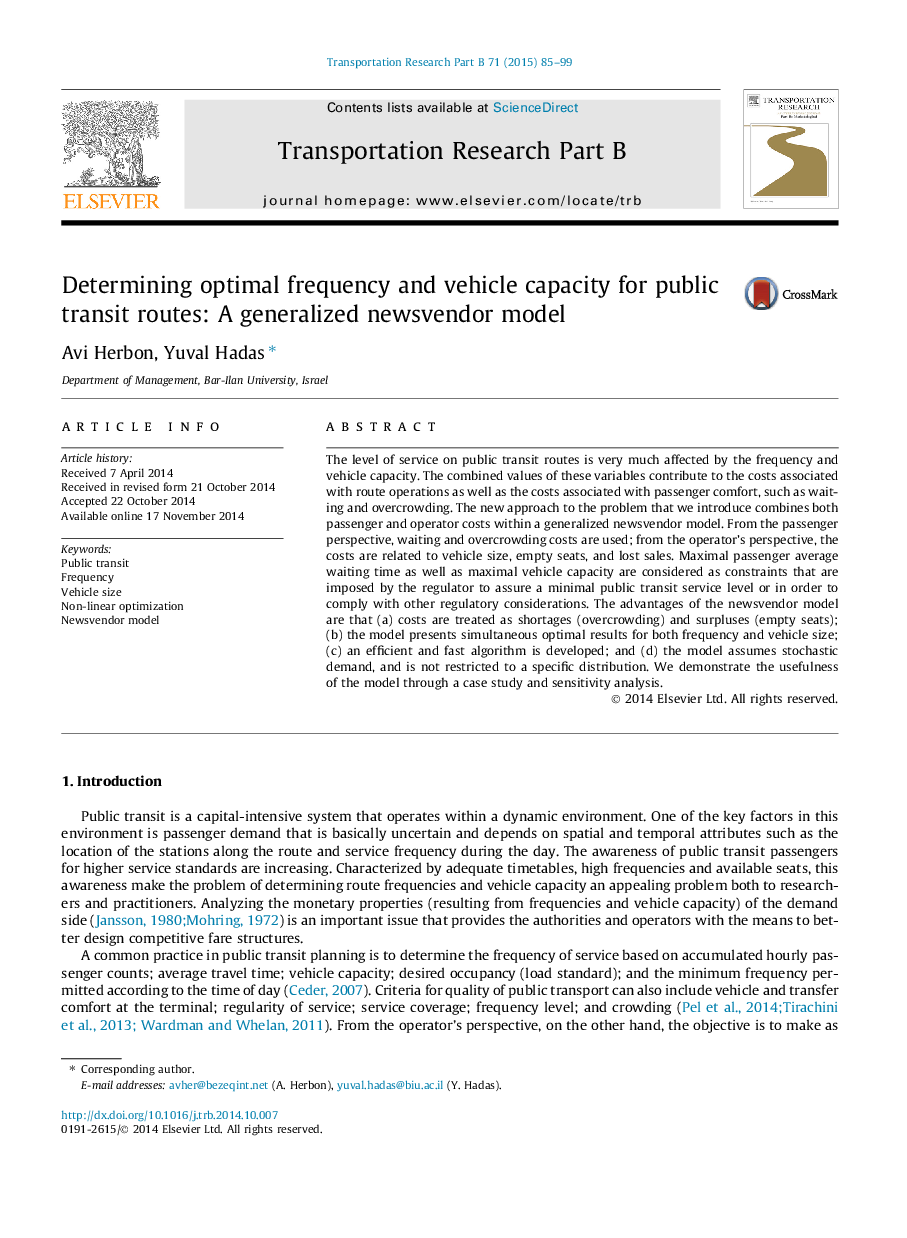| Article ID | Journal | Published Year | Pages | File Type |
|---|---|---|---|---|
| 1131818 | Transportation Research Part B: Methodological | 2015 | 15 Pages |
•Passenger waiting and overcrowding are considered.•Operator empty seats and lost sales costs are used.•The newsvendor model leads to an optimal and efficient solution.•Optimal frequency and vehicle size are set simultaneously.
The level of service on public transit routes is very much affected by the frequency and vehicle capacity. The combined values of these variables contribute to the costs associated with route operations as well as the costs associated with passenger comfort, such as waiting and overcrowding. The new approach to the problem that we introduce combines both passenger and operator costs within a generalized newsvendor model. From the passenger perspective, waiting and overcrowding costs are used; from the operator’s perspective, the costs are related to vehicle size, empty seats, and lost sales. Maximal passenger average waiting time as well as maximal vehicle capacity are considered as constraints that are imposed by the regulator to assure a minimal public transit service level or in order to comply with other regulatory considerations. The advantages of the newsvendor model are that (a) costs are treated as shortages (overcrowding) and surpluses (empty seats); (b) the model presents simultaneous optimal results for both frequency and vehicle size; (c) an efficient and fast algorithm is developed; and (d) the model assumes stochastic demand, and is not restricted to a specific distribution. We demonstrate the usefulness of the model through a case study and sensitivity analysis.
